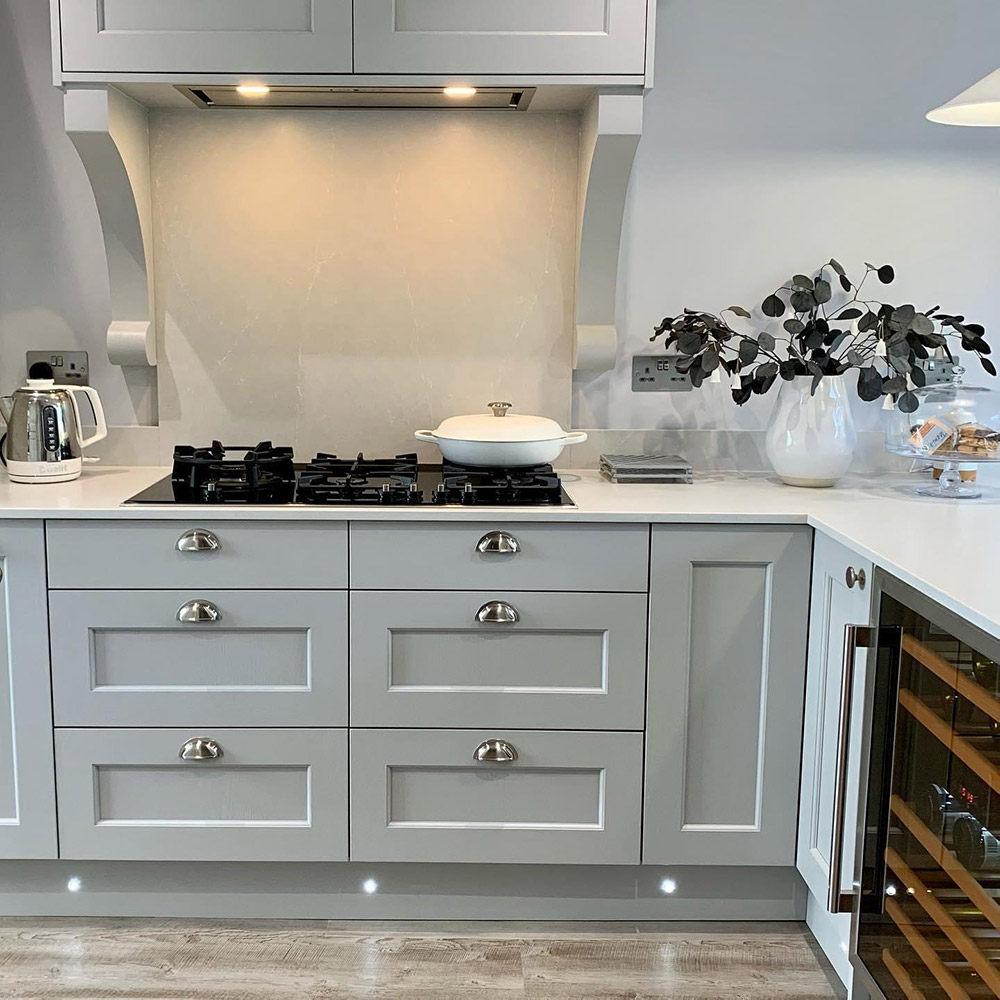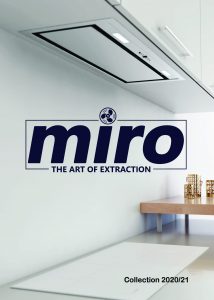You may have questions about Miro, our products, or our service.
We can answer any question you have, but take a look in our FAQ’s to the right as we may have already answered it here.
If your question is not here or you’d rather speak to us directly then head over to our contacts page

Where can I see the Miro range?
Miro has displaying retailers located all across the UK. To find one local to you go to the find a retailer form
How long does delivery take?
Miro can fulfil 95% of orders from stock therefore can deliver anywhere in the UK mainland within 2-5 days..
I'm looking to buy a Miro cooker hood. How do I go about this?
Miro supply direct to trade customers only. This being said we are more than happy to put you in touch with your nearest retailer. Just get in touch with us
Are Miro cooker hoods quiet?
All Miro cooker hoods include high quality silence plus motors as standard designed for modern-day kitchen living.
What size ducting should I use?
When ducting our products, please ensure you use the correct size, otherwise this will affect performance, and could invalidate your warranty. We recommend the following:
Round – 150mm rigid
Rectangular – 220mm x 90mm rigid
We don’t supply lengths of ducting, however there are lots of companies out there providing this service. We usually direct customers to i-sells.co.uk who provide nationwide coverage.
What distance should it be from hood to hob?
As with the size of the hood, the position is equally important. You can see further information on page 93 of our brochure, but here are the main details you need:
- Ceiling: Minimum 140cm – Maximum 160cm
- Canopy: Minimum 65cm – Maximum 70cm
- Wall: Minimum 60cm – Maximum 70cm
- Wall (angled): Minimum 60cm – Maximum 70cm (measured to middle of the hood)
- Island: Minimum 60cm – Maximum 70cm
What size cooker hood do I need?
Choosing an adequate hood size in relation to the cooking area is essential for optimum performance.
Ideally, your hood should be larger than your cooking area. You can see examples of this in the installation tips section of our brochure (page 93).
Is air circulation needed, or can I box everything in?
It is a basic requirement that the kitchen is provided with an air inlet to ensure good
air circulation and therefore a correct operation of the hood. Without this
inlet, and with the kitchen closed off, a depression is created that reduces the suction
efficiency of the hood and causing the motor to overwork.
If an air inlet for the gas installation isn’t there, one must be created.
How do I keep my stainless steel clean?
When exposed to oxygen in the atmosphere, the chromium in stainless steel forms a thin invisible layer called chromium oxide. This invisible layer covering the entire surface gives stainless steel its ability to resist stains and rust. If this layer is damaged, rust is formed on the surface at the point of that damage. The good news is that with a little cleaning and care the chromium oxide layer is self-healing.
For everyday cleaning of non-oxidized soils, dust, dirt and fingerprints, a mild soap/detergent (dish detergent) and warm water solution should be used. Use the solution to remove the soil, rinse with fresh water and a clean cloth and dry completely. Another alternative is to clean with a recommended stainless-steel cleaner.
Removal of oxidized stains and even “surface rust” can be done by using a paste made from baking soda and water or a cleaner that contains oxalic acid, such as Bar Keepers Friend Soft Cleanser. Alternatively, you can use WD-40 Multi Use.
- If using baking soda and water, use a cloth or soft bristle brush to rub the baking soda paste in the direction of the grain. This may take a little effort, but this will remove these soils. When the surface is clean, rinse with clean water using a clean, soft cloth. Next, apply a stainless-steel cleaner such as Cerama Bryte Stainless Steel Cleaner.
- If using Bar Keepers Friend, use only the liquid cleanser (free of grit) and be sure to rub in the direction of the metal grain lines with a damp soft sponge.
- If using WD-40 Multi-Use product, spray the affected area, leave for a couple of minutes, and remove with a gentle cleaning brush or toothbrush.
Avoid the use of steel wool or steel brushes as this will damage the stainless steel surface, enabling more rust to take hold.

